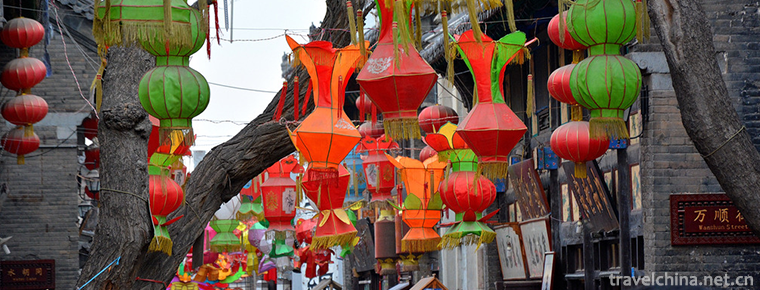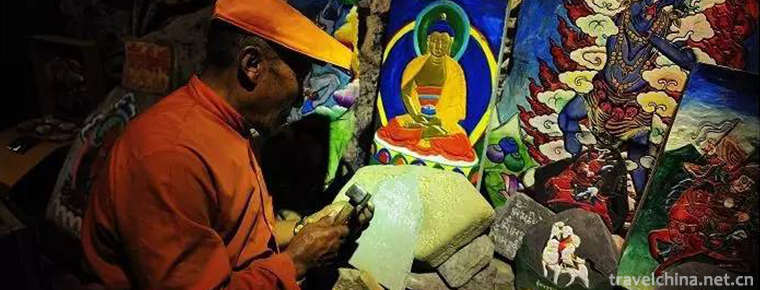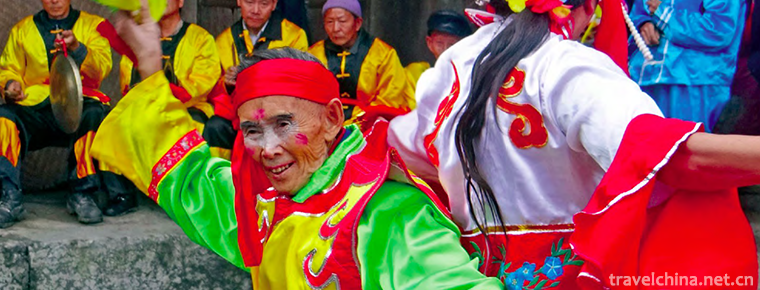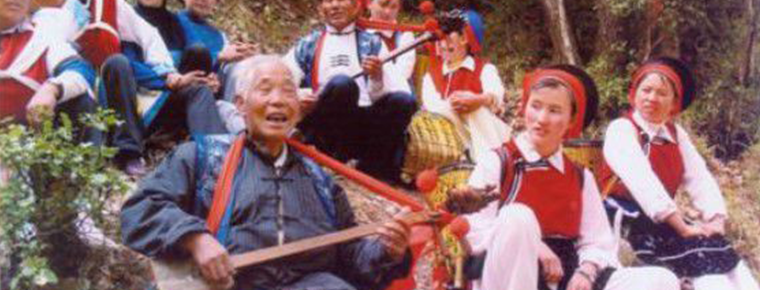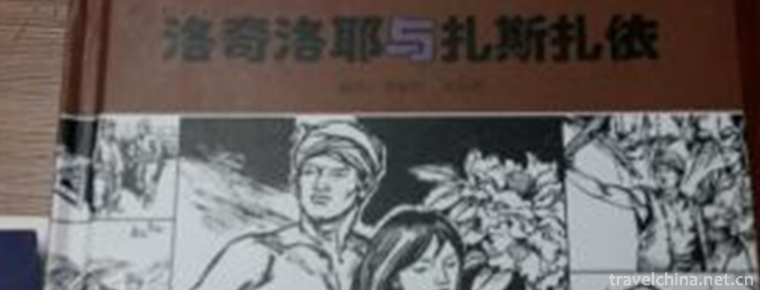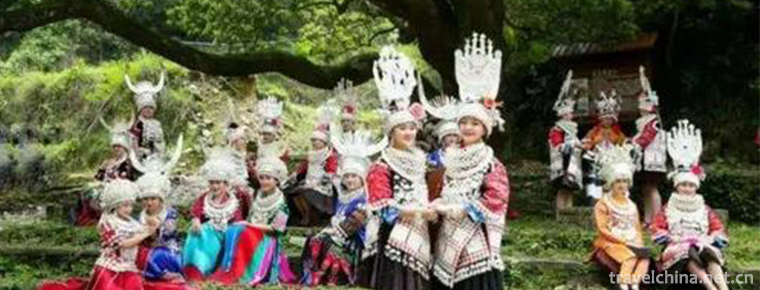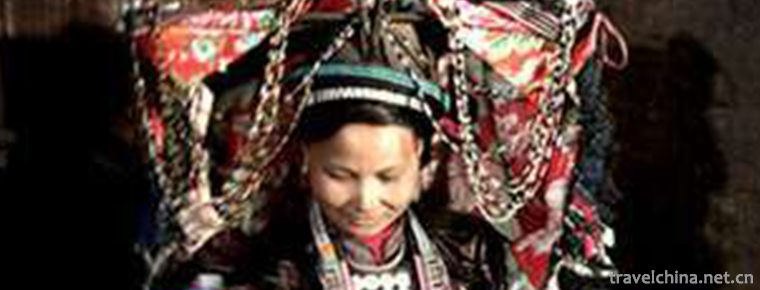The first bay of the Yellow River
The first bay of the Yellow River
The first bay of Jiuqu Yellow River is located in Tangke Town, Zoige County, Aba Tibetan and Qiang Autonomous Prefecture, Sichuan Province. It is the junction of Sichuan, Qinghai and Gansu provinces. The Yellow River flows slowly through Tangke City, driving about 61 kilometers from Zoige, passing through Tangke Town, 9 kilometers north of Tangke town to the first Jiuqu Bay of the Yellow River, and climbing a hill, the beautiful scene of the first Jiuqu Bay of the Yellow River leaps into view. The hillside behind the suokzang temple is the high point of the first bay on horseback climbing. The riding price is 50 yuan, and it takes about an hour to go back and forth.
In 2011, with the consent of Sichuan Provincial People's government, Tangke township was officially abolished and Tangke town was established. The town people's government is located in Baihe neighborhood committee community, which governs the administrative region of Tangke township.
Historical allusions
Yellow River First Beach
According to the topography and landscape of the upper reaches of the Yellow River, Tibetans have adopted more distinctive names for the upper reaches of the Yellow River, such as kariqu, yogu, Zhaqu, xingsuhai, Maqu, Xiezhi, Hequ, Jiuqu, fengliudahe, etc. in Tibetan, the "River" is called "Qu". As the saying goes, "Jiuqu" refers to the Yellow River section above guide in Tang Dynasty Maqu County is the only county in the Yellow River Basin named after the Yellow River. The Jiuqu Yellow River is the mother river of the Chinese nation. The surging Yellow River has nurtured hundreds of millions of Chinese people. The surging river carries the infinite hope and vision of this ancient nation for the future. For thousands of years, thousands of years, the surging waves can not finish the fiery love of the Yellow River people, the rolling yellow sand is floating with endless songs of loess, and the Jiuqu River beach can not contain the brilliant life of the Chinese nation!
scenic spot
The world's 99 bends of the Yellow River, the most beautiful natural landscape to the first bend and Hukou waterfall. These two landscapes are known as the magic nine curved three-dimensional map of the Yellow River. It is a S-shaped curve formed when the Yellow River flows through these two landscapes. It is known as the yin-yang Taiji diagram in the book of changes. It is similar to the theory of "reincarnation of life" or "reincarnation of sun and moon" in Tibetan Buddhism and Tibetan Buddhism.
The first Jiuqu Bay of the Yellow River originates from the Yellow River of Bayan Kala mountain (4500 meters above sea level) and flows through Sichuan Province. It is a famous scenic spot beside suokezang temple in Tangke Township, Zoige county. The cross-sectional diameter of the Yellow River is 300 meters and that of the Baihe River is 400 meters. In this section, the Yellow River is the boundary river between Sichuan and Gansu, Gansu in the West and Sichuan in the East. The Yellow River comes from Gansu Province and the Baihe River flows into the Yellow River from the top of the first bay of the Yellow River in the shape of "s". The water of the Yellow River is like a ribbon of fairies floating from the horizon. It gently caresses the edge of Sichuan Province and then turns around to float back to Qinghai Province. Therefore, it is called the first bay of the Yellow River in Jiuqu.
This hilly plateau is like an island floating in the river. There are many islands in the first bay of Jiuqu. Red willows form a forest and the golden pheasant and hare are in seclusion. Among them, there are abundant water birds and fishing boats. It is a paradise for Caragana, yellow duck, hare, Red Crowned Crane and black necked Crane. It is praised as "the solemn mirage in the universe" by Chinese and foreign scientists. There is a hill in front of suokezang temple, which can be seen in the distance by climbing on the top of the hill. However, it can be seen that the white river stretches straight to the sky, and the Yellow river meanders to the north. The grass connects with the water, and the water connects with the sky. The two rivers are elegant and unique, like a couple of lovers, walking towards the northwest horizon hand in hand, which makes people open-minded. There is a long time of falling sun and falling water. Tents in clusters, wisps of smoke, the sound of pastoral songs and galloping horses are picturesque and picturesque. The White Pagoda of the ancient temple, accompanied by the Yellow River, is more natural and extensive. Next to the first slope, it is the famous sokezang temple on the grassland. It is the best place to watch the sunrise and sunset. From a distance, the vast wilderness and the vast blue sky naturally blend into a harmonious whole. This idea of the unity of man and nature was understood and expressed by the first living Buddhas in this highland. It is amazing!
Located in the national Alpine Wetland Reserve, it is the hometown of the three famous horses in China. As the saying goes: the heart is not willing to go to the Yellow River, all the Chinese and foreign tourists who come here to see the first bay of the Yellow River Jiuqu as soon as possible. The best time to shoot the first bay of the Yellow River is to step onto a high slope on the side of the road when the sun is setting in the West. The S-shaped Yellow River is suffused with red phosphorescence in the setting sun, and the red glow in the sky after the sun falls into the horizon is the best time to shoot. In addition, there is a temple "tangkesuoke Tibetan temple" and a Tibetan village on the edge of the Yellow River, which can take pictures of Tibetan folk customs. There are also many Sutra banners on the Bank of the river, which add some mysterious atmosphere to the beautiful first bay of the Yellow River.
The largest grassland in Sichuan Province, covering an area of nearly 30000 square kilometers, is composed of meadow grassland and swamp. Grassland flat terrain, endless, sparsely populated. The Red Army's 25000 Li Long March has passed here many times, leaving many touching stories and revolutionary sites, making the grassland famous both at home and abroad. Summer is the golden season of grassland, where the sky is clear and the visibility is very high. Between heaven and earth, green grass, flowers like brocade, fragrance secluded, a look boundless. There are numerous small lakes dotted with stars in the grassland. The water is blue. The small rivers are like vines, which connect the large and small lakes. The water is clear and the fish can be counted. The grassland tour is rich in contents, including enjoying the grassland scenery, listening to the melodious pastoral songs, fishing for the Yellow River fish, having a picnic, riding on the grassland, visiting the sika deer ranch, visiting the first bay of the Yellow River, staying in the waipeng Hotel, picking wild mushrooms in the forest, and visiting temples.
Jiuqu, the first bay of the Yellow River, is 78 kilometers away from Hongyuan county. Located in the heart of the grassland, zigzag river divides into numerous river islands and islands. With abundant water islands and fishing boats crossing, it is praised as "the solemn mirage in the universe" by Chinese and foreign scientists. This is the largest grassland in Sichuan Province. You can sit quietly by your mother's riverside, listen to her story of history, appreciate "sunset and solitary ducks fly together, autumn water is the same color of the sky", and feel the magnificent song of the long river of life in the twilight.
At night, there is a soft light in the tent on the Bank of the river, and the bonfire is blazing in the moonlight. People sing and dance to the mother river nearby.
The first bay of Jiuqu of the Yellow River has its unique beauty. The most beautiful scenery is in the evening and at sunset, when the sunset turns red and faces the mountain, the whole river valley is covered in a golden yellow. The Yellow River is green and green, and wild flowers are everywhere, lying in the grass and lying in the flower cluster, which gives people the feeling of returning to nature, which makes you feel free from the unprecedented physical and mental.
Known as the "solemn mirage in the universe", the Yellow River's Jiuqu first bay has a clear river with gentle water potential, blue sky and white clouds, green grass and flowers, tents, cooking smoke, cattle, sheep and horses, circling eagles, picturesque and colorful. Jiuqu the first bay of the Yellow River scenic spot, enjoy the Yellow River on the grassland. It's like a silver ribbon. Under the sun, the waves scale piece piece by piece overlooks its magnificent scenery, makes the person suddenly have the feeling of worship, standing here, you will have a new understanding of human and nature.
When you look at the first bay of the Yellow River, you'll camp in the first bay or stay in suokzang temple that night, about 10 yuan / bed, so that you can see the first bay at sunrise the next morning.
Practical information
admission ticket
60 yuan
Accommodation information
There are 4 to 5 hotels in Tangke township (mostly double standard).
Traffic information
Distance from the airport: 198km, according to the airport, the driving time is about 3 hours
Distance to bus station: 68km; driving time to bus station: 1 hour
Nearby bus station: the traffic to the first bay of the Yellow River is not very convenient. There are several choices.
One is to charter a car from Zoige, with a round trip fare of 150-200 yuan;
Second, charter a car from Hongyuan (76km away from Hongyuan), about 250 yuan for one-way trip;
Third, take the bus from Hongyuan to Zoige and get off at Tangke Township, and then walk for 7-8 kilometers;
The fourth is to take the shuttle bus from Zoige to Ha Man township or Hongyuan.
When you leave, you can get a bus at the entrance of the first bay. The bus from Hongyuan to Zoige passes through Tangke at about 9:00 a.m., and the bus from Ruoergai fahongyuan or Tangke passes through Tangke at about 8:00 a.m. The bus from Haman township to Zoige passes through Tangke at about 11:00 a.m. Another thing is waiting for the bus from malkang to Zoige or Chengdu to faroergai around 1:00 p.m.
Food information
Hand grazed mutton, Tibetan pork, ginseng fruit, milk cake, butter tea, yak meat, roast whole sheep, monk steamed bun, Yellow River fish, yogurt, etc., can be tasted in the local Tibetan family music. At the same time, we can eat beef and mutton in the northwest of the county.
First Bay
Certified by Shanxi human resources research and development center of Shanxi Academy of Social Sciences, the "full stop" Yellow River daguaiwan, located in Xinguan Town, Shilou County, is known as "the first bay of the Yellow River in the world". It has become the eight major tourist attractions in Shanxi Province, together with Wutai mountain, Yungang Grottoes, Qiaojia courtyard, Pingyao ancient city, Hukou waterfall, Changjia courtyard and Longtan night scene. Introduction to the first bay of the Yellow River
The Yellow River flows through 9 provinces with a total length of 5464 km. In the Shanxi Shaanxi gorge section, the Yellow River generally flows from north to south, but there is a large turning Bay in the middle and lower part of the Grand Canyon, which suddenly turns to the East and turns into a very peculiar big round Bay, which is almost a full stop.
Overlooking the Bay, it is narrow in the West and wide in the East, and its tail is complete, just like a gourd. The total distance between the inlet and outlet of the bay is 8000 M. the narrowest land in the bay is 700 m at the entrance and exit, while the widest is 1700 M.
In terms of sequence, volume and curvature, the Yellow River Bay in Shilou county can be called "the first bay of the Yellow River".

-
Zhoucun Ancient Mall
Zhoucun Ancient Mall, also known as Street, is located in Zhoucun District, Zibo City, Shandong Province. The main road of Shandong Province, Jiqing Expressway.
Views: 114 Time 2019-03-20 -
Tibetan Gesar Painted Stone Carvings
Tibetan Gesar painted stone carvings belong to a relic of Chinese Tibetan Gesar culture. They are mainly distributed in Seda, Shiqu and Danba counties in Ganzi Tibetan.
Views: 114 Time 2019-04-06 -
Straw weaving
Grass weaving is a popular folk handicraft. It makes use of the grass produced in different places to make materials locally and weave into various daily necessities.
Views: 167 Time 2019-04-15 -
Tea ceremony
Tea art is a kind of culture. On the basis of Chinese excellent culture, tea art has absorbed and borrowed other art forms extensively, and expanded to literature, art and other fields.
Views: 213 Time 2019-04-15 -
Gulin lantern
Gulin lanterns, centered on Gulin, are widely distributed in the middle reaches of Chishui River at the junction of Sichuan, Guizhou and Yunnan provinces..
Views: 249 Time 2019-05-01 -
Jianchuan Opera
Jianchuan Baiqu is an ancient music variety with a long history and wide spread in Bai nationality area. It is mainly popular in Jianchuan, Eryuan and Tongdian, Jinding and Jiuhe of Lanping County, Nu.
Views: 309 Time 2019-05-05 -
Lodgeroye and Zaszai
Lodgeroye and Zaszai is a representative long poem of Hani poetry style, which is widely spread in all villages inhabited by Hani Biyo people in Hani Autonomous County of Mojiang. There are ten chapte.
Views: 168 Time 2019-05-15 -
Miaos Rock planting Custom
Traditionally, the Miao people have a kind of public deliberation and legislative activities called "burying rock" (also known as "planting rock". When burying rock, they bury a re.
Views: 192 Time 2019-06-05 -
Yao Nationality Medicine
Yao medicine is a traditional medicine summarized by the Yao people in their struggle against diseases. It has systematic medical theory and rich clinical experience. It has distinct national and loca.
Views: 185 Time 2019-07-11 -
Cultural undertakings in Panzhihua
As of the end of 2018, Panzhihua has 3 museums and exhibition halls; 50 cultural (Art) museums, including 44 cultural stations and 8 theatres and cinemas; and 6 public libraries, with a total collection of 990800 books. There are 43 Township radio and television stations and.
Views: 245 Time 2020-12-14 -
Nanchong scenic spot
The national 5A tourist attraction is located in Ma'an Town, Yilong County, with a total planning area of 52.5 square kilometers. The core scenic area with the former residence of Zhu De, the birthplace of Zhu De and the memorial hall of former residence of Comrade .
Views: 318 Time 2020-12-17 -
Yibin transportation
Yibin is a transportation hub city in South Sichuan, which is famous for its comprehensive three-dimensional transportation network of water, land and air. It is located at the starting point of the golden waterway of the Yangtze River and the strategic point of Sichuan Yunna.
Views: 119 Time 2020-12-18
